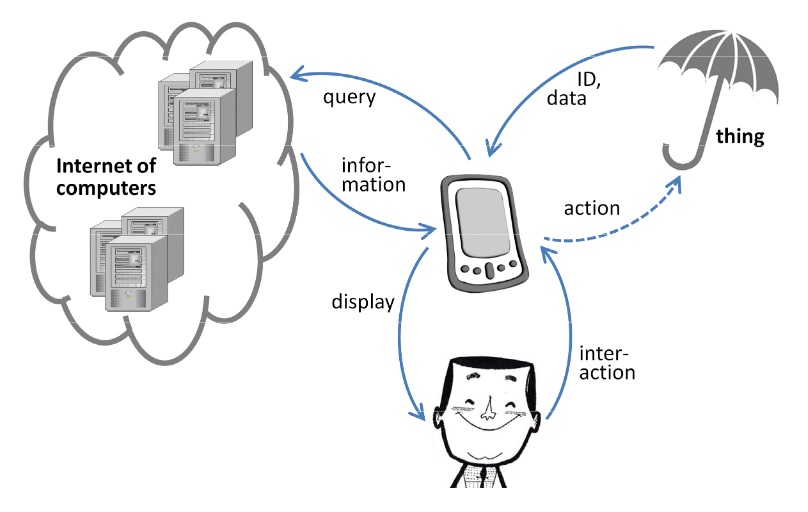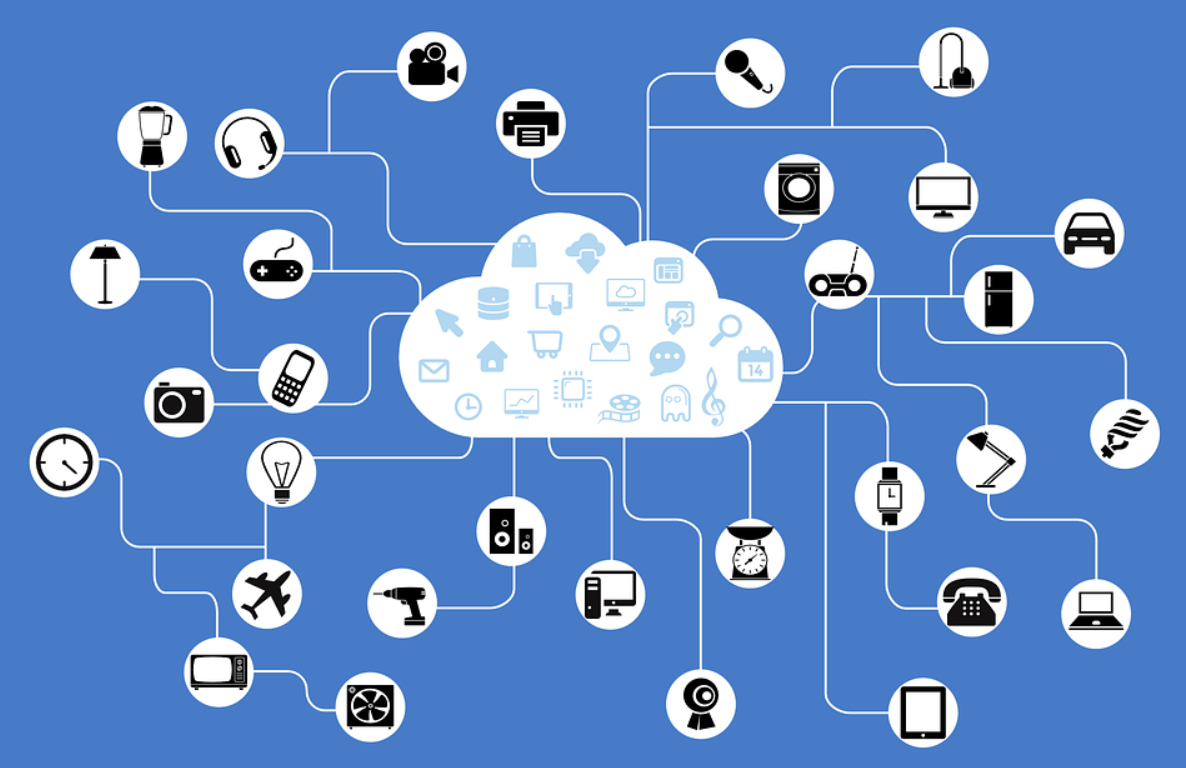
Figure 1. The smartphone as a mediator between people, things and the Internet.
The Internet of Things represents a vision in which the Internet extends into the real world embracing everyday objects. Physical items are no longer disconnected from the virtual world, but can be controlled remotely and can act as physical access points to Internet services. An Internet of Things makes computing truly ubiquitous – a concept initially put forward by Mark Weiser in the early 1990s [29]. This development is opening up huge opportunities for both the economy and individuals. However, it also involves risks and undoubtedly represents an immense technical and social challenge.
- From fitness trackers to smart heating systems, the Internet of Things (IoT) describes the growing network of internet-enabled devices.
- It’s also enabling smart cities and, in future, driverless cars.
- Along with other emerging technologies such as AI, the IoT is part of the Fourth Industrial Revolution.
- COVID-19 has accelerated the use of IoT technologies, but questions around governance remain.
⋮
In the past 12 months, the role of the IoT in the COVID-19 pandemic has been invaluable.
“IoT applications such as connected thermal cameras, contact tracing devices and health-monitoring wearables are providing critical data needed to help fight the disease, while temperature sensors and parcel tracking will help ensure that sensitive COVID-19 vaccines are distributed safely,” according to the Forum’s State of the Connected World report.
Beyond healthcare, IoT has helped make COVID disrupted supply chains more resilient, automated activities in warehouses and on factory floors to help promote social distancing and provided safe remote access to industrial machines.
Sources:
- February 9, 2010. Friedemann Mattern, and Christian Flörkemeier. “Vom Internet der Computer zum Internet der Dinge.” Informatik-Spektrum 33 (2): 107–21.

https://doi.org/10.1007/s00287-010-0417-7.
Research Journal. - 2010. Friedemann Mattern, and Christian Floerkemeier. “From the Internet of Computers to the Internet of Things.” In From Active Data Management to Event-Based Systems and More, edited by Kai Sachs, Ilia Petrov, and Pablo Guerrero, 6462:242–59. Lecture Notes in Computer Science. Berlin, Heidelberg: Springer Berlin Heidelberg.

https://doi.org/10.1007/978-3-642-17226-7_15,
https://vs.inf.ethz.ch/publ/papers/Internet-of-things.pdf.
Research Journal. - June 24, 2017. Jean-Marc Frangos. “The Internet of Things Will Power the Fourth Industrial Revolution. Here’s How.” World Economic Forum.

https://www.weforum.org/agenda/2017/06/internet-of-things-will-power-the-fourth-industrial-revolution/.
World Economic Forum. - March 31, 2021. Natalie Marchant. “What Is the Internet of Things?” World Economic Forum. This article is part of Global Technology Governance Summit.

https://www.weforum.org/agenda/2021/03/what-is-the-internet-of-things/.
World Economic Forum. - “What Is IoT (Internet of Things)?” Microsoft Azure.

https://azure.microsoft.com/en-us/overview/internet-of-things-iot/what-is-the-internet-of-things/.
Microsoft. - “Internet of Things.” In Wikipedia.

https://en.wikipedia.org/w/index.php?title=Internet_of_things.
Reference.
